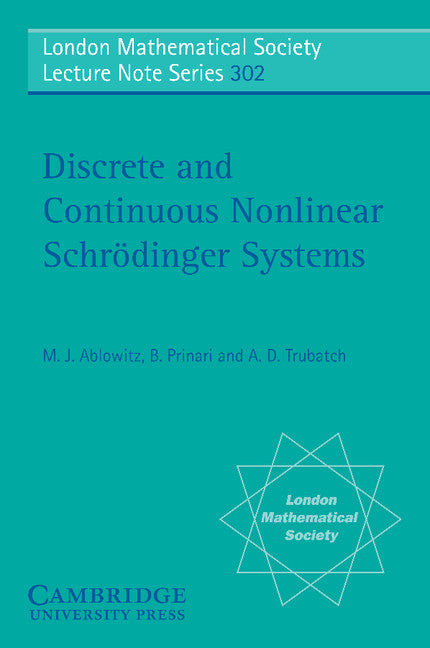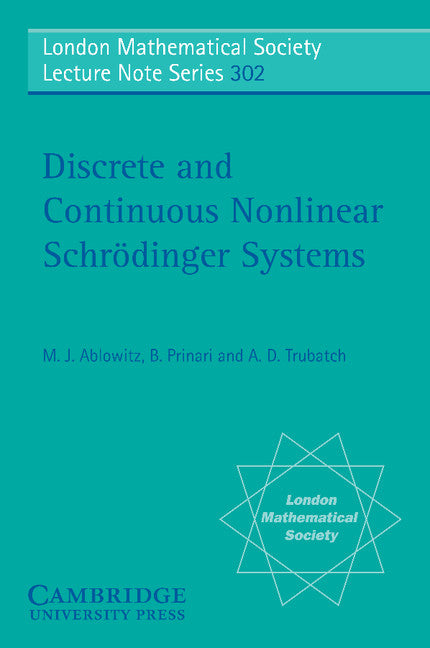Freshly Printed - allow 8 days lead
Couldn't load pickup availability
Discrete and Continuous Nonlinear Schrödinger Systems
This book presents a detailed mathematical analysis of scattering theory, obtains soliton solutions, and analyzes soliton interactions, both scalar and vector.
M. J. Ablowitz (Author), B. Prinari (Author), A. D. Trubatch (Author)
9780521534376, Cambridge University Press
Paperback, published 24 December 2003
268 pages
22.4 x 15 x 1.5 cm, 0.4 kg
'… this valuable book provides a detailed and self-contained presentation of an extremely important tool used in the study of NLS systems.' EMS Newsletter
In recent years there have been important and far reaching developments in the study of nonlinear waves and a class of nonlinear wave equations which arise frequently in applications. The wide interest in this field comes from the understanding of special waves called 'solitons' and the associated development of a method of solution to a class of nonlinear wave equations termed the inverse scattering transform (IST). Before these developments, very little was known about the solutions to such 'soliton equations'. The IST technique applies to both continuous and discrete nonlinear Schrödinger equations of scalar and vector type. Also included is the IST for the Toda lattice and nonlinear ladder network, which are well-known discrete systems. This book, first published in 2003, presents the detailed mathematical analysis of the scattering theory; soliton solutions are obtained and soliton interactions, both scalar and vector, are analyzed. Much of the material is not available in the previously-published literature.
1. Introduction
2. Nonlinear schrödinger equation (NLS)
3. Integrable discrete nonlinear schrödinger equation (IDNSL)
4. Matrix nonlinear Schrödinger equation (MNLS)
5. Integrable discrete matrix NLS equation (IDMNLS)
Appendix A. Summation by parts formula
Appendix B. Transmission of the Jost function through a localized potential
Appendix C. Scattering theory for the discrete Schrödinger equation
Appendix D. Nonlinear Schrödinger systems with a potential term
Appendix E. NLS systems in the limit of large amplitudes.
Subject Areas: Physics [PH], Applied mathematics [PBW], Differential calculus & equations [PBKJ]


